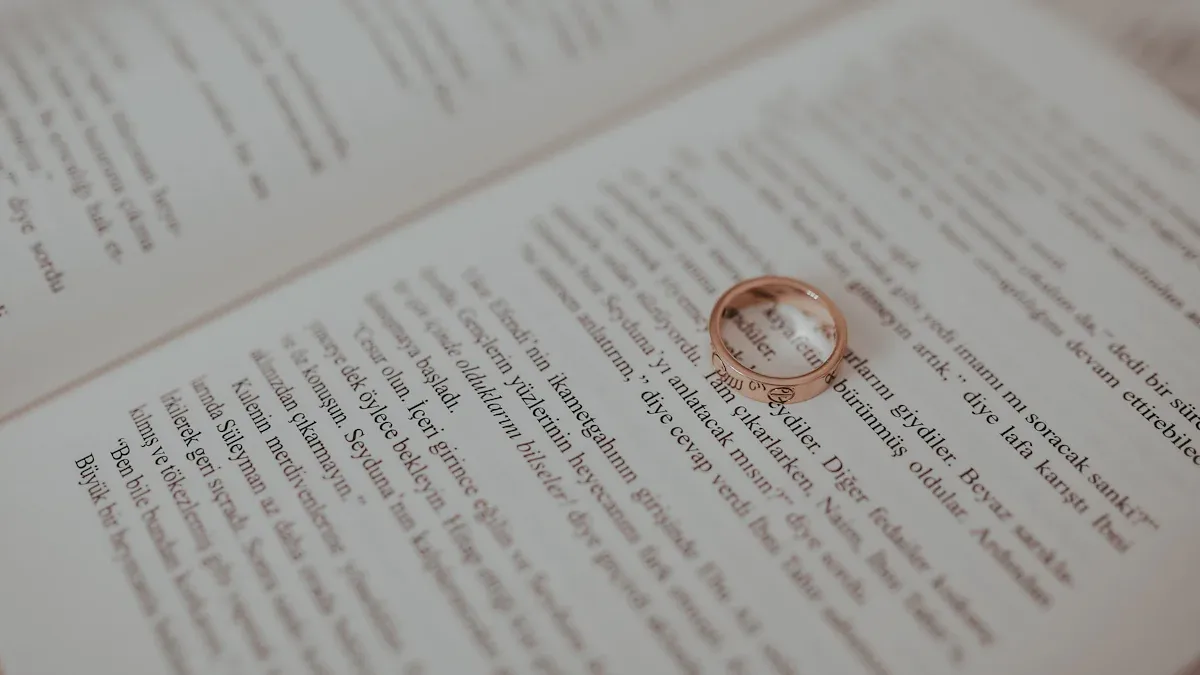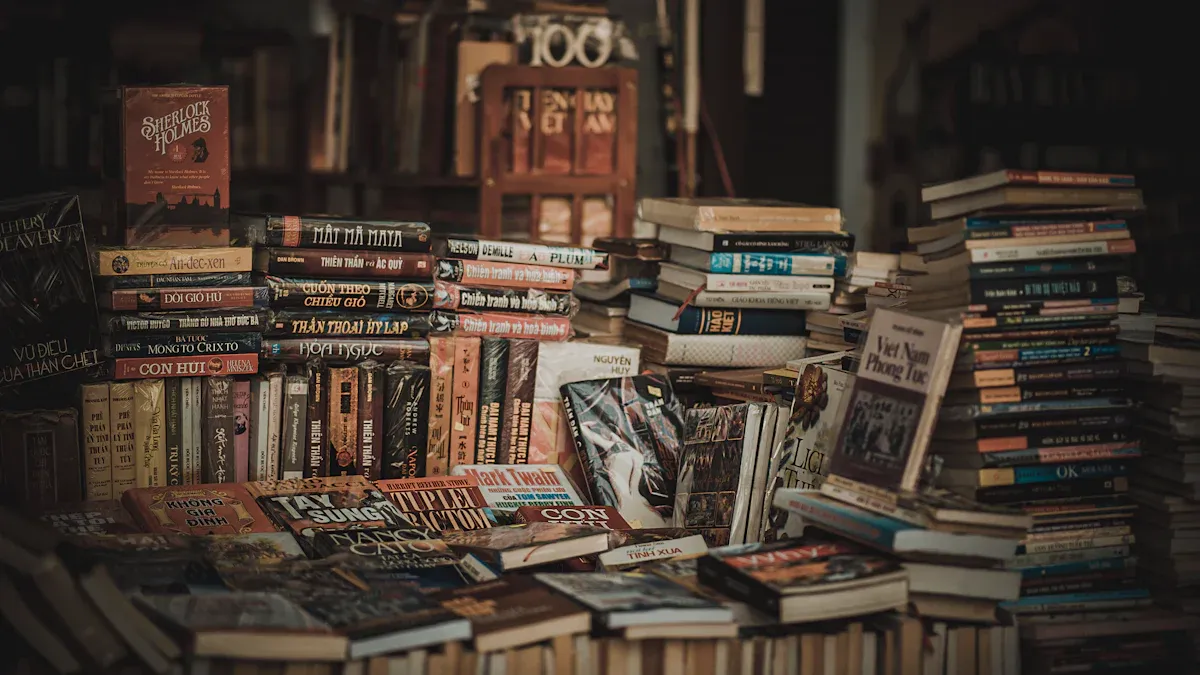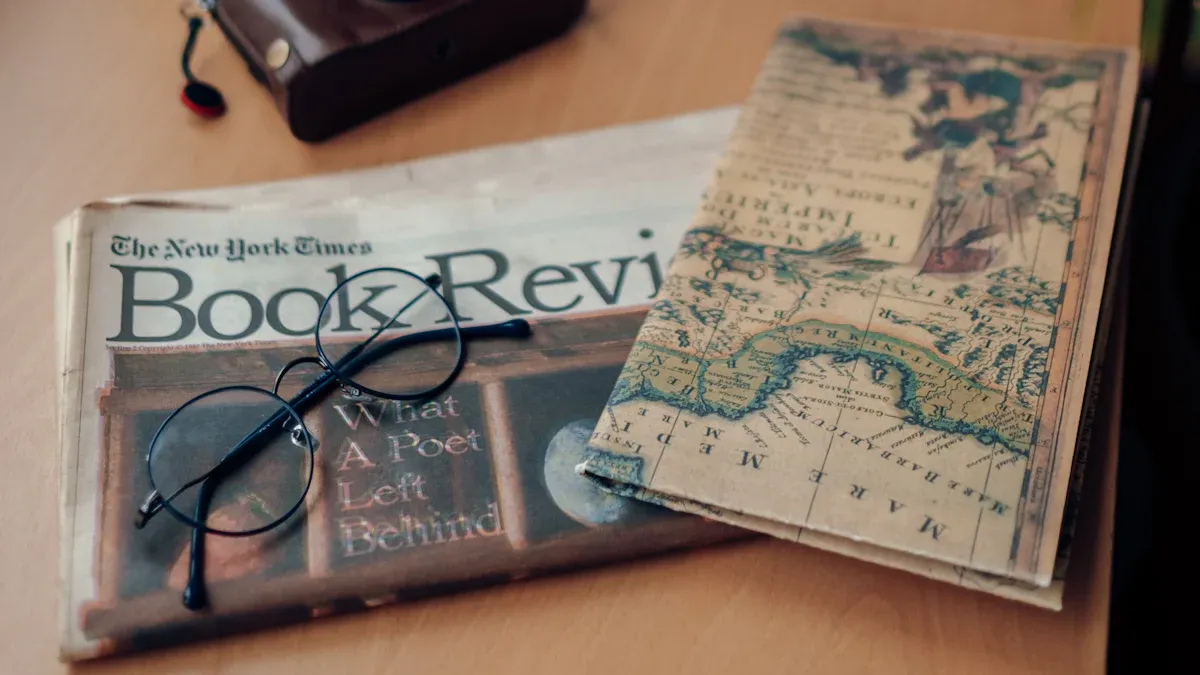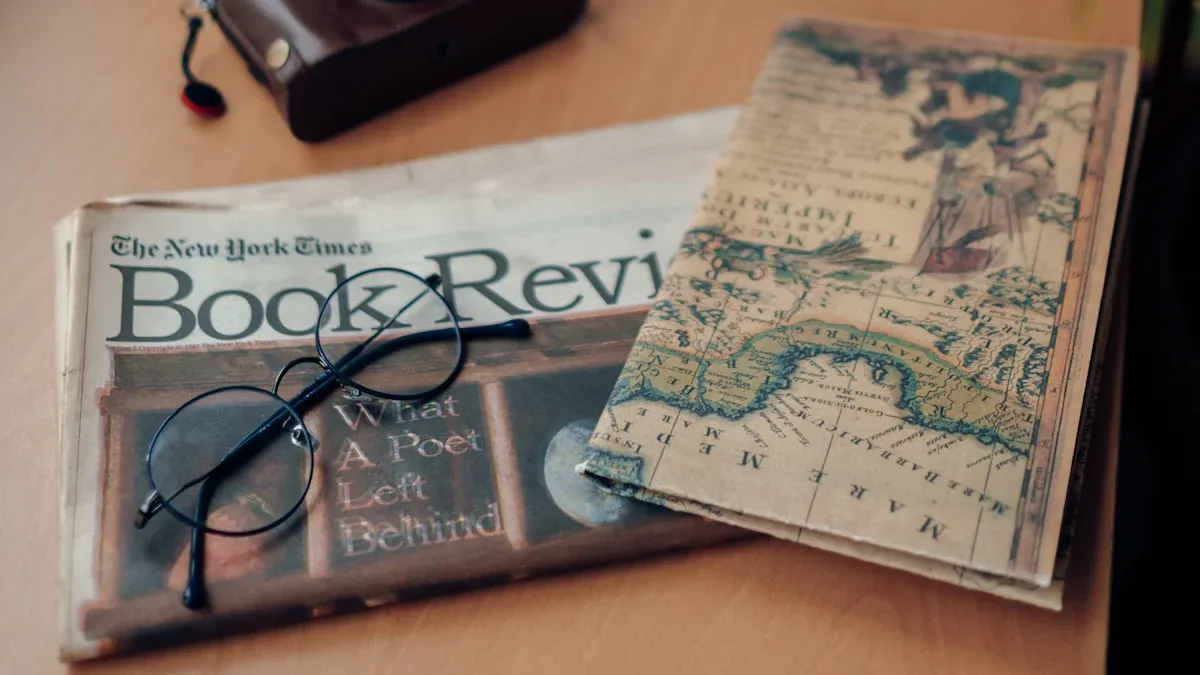I have to admit, “Apple in China by Patrick McGee Book Review” kept me up way past my bedtime—my cat gave up waiting for me to turn out the light. The book drops jaw-dropping numbers: Apple invested $55 billion a year in China, trained 28 million workers (yep, more than California’s workforce), and relies on China for about 90% of its products.
These facts hit me hard. I felt the weight of Apple’s choices in every page, especially now, when tech and politics feel more tangled than ever.
Key Takeaways
Apple relies a lot on China to make its products. The company spends billions and trains many workers there.
The book shows hard working conditions in Apple’s Chinese factories. It also talks about labor violations. This shows the real human cost behind the devices.
Apple faces big risks from trade wars. It also deals with changing Chinese rules. Strong local competitors like Huawei and Xiaomi are a problem too.
The company is trying to make more products in India. It is also investing in new technologies like AI and green projects.
Apple’s supply chain is very complex and fragile. It stretches across many countries. It can be hurt by political and economic changes.
The book uses facts and personal stories together. This makes global tech and business issues easy to understand and interesting.
Reading this book helps you see your iphone differently. It is part of a bigger story about business, ethics, and world politics.
If you care about technology, business, or global issues, this book is for you. It gives new ideas that make you think about Apple and China.
Apple in China by Patrick McGee Book Review
Main Argument
I have read thousands of books, but this one surprised me. The main idea is clear and shocking. Apple’s whole business depends on China. This is both good and risky. McGee shows how deep Apple’s ties to China go. I was amazed to learn Apple spent $275 billion in China. That is even more than the Marshall Plan. This number changed how I see things.
The book says Apple is stuck in a manufacturing trap. Apple sent many engineers to China. They trained millions of workers and spent billions on factories. Now, Apple cannot just leave. If China stopped sending materials or workers, the iPhone could disappear fast.
I kept asking myself, “Is Apple really this weak?” After reading what former Apple workers said, I started to believe it. The book’s main point is scary. Apple needs China so much that the company, and maybe US tech, could fall apart very quickly.
Book Structure
McGee does a great job telling this story. The book does not just list facts. It starts with Apple making products in the US. Then it shows when Apple moved to China. Each chapter explains more about Apple’s link to China. It talks about the first deal with Foxconn.
It also tells how engineers fly back and forth across the ocean. I liked how the book uses interviews, reports, and government data. It never feels boring. It reads like a mystery, with each clue showing how complex Apple’s situation is.
McGee does not give simple answers. He does not say Apple is good or bad. He shows the real story. Apple wanted perfect products and more money. This led to a partnership that made China strong in manufacturing.
The book explains how Apple’s rules made suppliers earn very little. It also shows how Chinese engineers learned from Apple. This helped Chinese brands like Huawei grow. I took lots of notes because there was so much to learn.
Why It Matters
The book shows how Apple’s choices changed the world. Apple’s actions changed the power between the US and China. The Council on Foreign Relations says Apple’s deals changed trade numbers. Now it is hard to know who really wins from all those iPhones. That is surprising.
This is about more than money. Apple agreed to Chinese censorship. They removed VPN apps and stored user data in China. This brings up hard questions about right and wrong. I kept thinking about these problems after I finished the book. There is also a big political game. Apple works with Chinese tech companies like Alibaba. This is not just about selling phones. It is about who will control AI, data, and power in the world.
After reading this book, I see my phone differently. The book shows that Apple’s story is now China’s story too. The effects reach everywhere. It changes phone prices in Tokyo and jobs in California. In all my years of reading, I have not seen a business book feel this important. If you care about tech, business, or the future, you should read this book. You might even stay up late like I did.
Labor & Ethics
Working Conditions
Factories
When I read about Apple’s factories, I was shocked. I thought I knew about supply chains, but this book made it real for me. I could imagine the machines and feel how tired the workers must be.
McGee goes deep into what happens at Foxconn and Pegatron, which are Apple’s biggest suppliers. I took lots of notes when I learned about the huge number of workers. There are tens of thousands of people, big dorms, and long shifts that mix up day and night.
China Labor Watch, an independent group, made me see even more. Their report on Pegatron, Apple’s second-biggest supplier, found 17 times Apple’s own rules were broken. These included hiring discrimination, using underage workers, and making people work too much overtime. I kept asking myself, “How can this happen at such a rich company?”
The Fair Labor Association also checked Foxconn. They talked to thousands of workers, looked at dorms, and checked records. They found workers working too many hours, unsafe places like blocked exits, and worker groups run by bosses. When I read this, I felt worried. I realized my iPhone had a much bigger story than I thought.
Labor Violations
Most books skip the bad parts, but McGee does not. He tells stories from workers who got sick from nickel and aluminum dust, had skin rashes, eye pain, and trouble breathing. I could almost feel my own eyes sting as I read. The book says strict rules and hard work push workers too far. There is no extra time for hard jobs, just pressure to go faster. I shook my head, wondering how anyone could keep working there.
Research with SACOM, a labor rights group, shows:
Bad working conditions and health risks at Foxconn.
Workers near dangerous materials.
Stressful, high-pressure jobs with little help.
Protests, strikes, and walkouts—workers fighting for their rights.
Even though Apple says they are fixing things and have a hotline, the book shows big problems are still there. I read about strikes and walkouts at Foxconn, and I felt both angry and sad. In all my years reading business books, I rarely see such real stories about people behind the numbers.
The legal part is hard to understand, too. The book talks about forced labor in cobalt mining in the Democratic Republic of the Congo. The courts said it was hard to blame Apple because the law does not reach that far. I felt upset that it is so hard to get justice for workers, even when there is proof.
Apple’s Response
I always want to see both sides in a book, and McGee does that. He does not just blame Apple—he shows what they tried to do. Apple brought in the Fair Labor Association to check factories. They promised to fix problems and raised supplier prices to pay workers more. I wanted to think things were better. But then I read there is no proof workers got more money. That made me feel bad.
Apple’s senior director of Supplier Responsibility talks about their hotline and public promises. But the book shows that, even with all the news, the main problems are still there. Workers still protest. Conditions are still not good enough. I finished these chapters feeling mixed—proud of Apple’s efforts, but not sure they fixed things.
After reading over 3,000 books, I can say this: very few business books made me feel this way. The labor and ethics part made me think about my own choices as a buyer.
Strategy & Politics
Chinese Regulations
I never thought I would read government rules late at night. But this book made me do it. Apple has to follow China’s changing rules. If they don’t, they could lose everything. Since 2015, China shares fewer big policy papers, especially about tech. The government now keeps more secrets and cares more about safety than being open. I felt nervous reading about this. Apple must guess what the next rule will be.
Apple’s way of working in China surprised me. They change their products for local people. They set different prices in each city. They also work with local companies. China is Apple’s second-biggest market. Over 190 million iPhones are used there. That number shocked me. Apple built huge networks to keep up. I learned Apple’s success in China depends on how fast it can change. The rules can change at any time.

Trade War
The trade war part made me nervous. I thought trade wars were just about taxes. But McGee shows Apple is stuck in the middle. The book talks about numbers that are hard to understand. I had to read some parts twice. Here are some things I learned:
In 2022, China changed how it shares trade numbers. This made a $360 billion gap between customs and payment data. Apple’s “factoryless” model is a big reason.
Most iPhones are made in China by Foxconn. But Apple makes money in places like Ireland or the U.S. This makes the trade numbers look strange.
For iPhones sold outside China, Apple pays $300–$400 per phone to other companies. This matches U.S. import numbers.
iPhones sold in China do not cross borders. They do not show up in customs data but still help China’s economy.
Apple made $30 billion in profit from $72 billion in sales in China. That is a huge number.
Apple moves money in tricky ways, like bonded zones and royalties. This makes the numbers even harder to follow.
The IMF and Chinese leaders could check these money flows, but the data is not clear.
After reading this, I saw Apple’s business is like a puzzle. Even experts have trouble understanding it. The trade war did not just raise prices. It changed how Apple works all over the world.
Local Competition
I liked how McGee showed how hard the local competition is. Apple is not just fighting Samsung now. Chinese brands like Xiaomi and Oppo are everywhere. The book uses Porter’s Five Forces to show how Apple studies its rivals. Apple plans its next steps carefully. I wanted Apple to win, but I also liked how hard the local brands work.
Here is a table that helped me see the big picture:
Aspect | Details |
|---|---|
Global Smartphone Market Share | Apple: 17% (Q2 2023) |
Competitors’ Market Share | Samsung: 20%, Xiaomi: 12%, Oppo: 10% |
Smartphone Units Sold | Apple: 845.3 million (Q2 2023), Samsung: 53.5 million, Xiaomi: 33.2 million, Oppo: 28 million |
Manufacturing Locations | Primarily China (95% of iPhone supply), with expansions in India and other countries |
Production Shift Examples | Foxconn started iPhone 11 production in India (July 2020) with $1 billion investment; Pegatron established a subsidiary in India |
Competitive Advantages | Hardware-software integration, ecosystem control, product differentiation |

I laughed at myself for cheering at a chart. But the numbers are clear. Apple faces big threats from local brands. The book made me see Apple’s future in China is not safe. Every new phone launch is a big risk. After reading this, I checked my own phone’s brand. Maybe I am not as loyal as I thought.
Economic Impact
Apple’s Growth
I have to admit, reading about Apple’s growth in this book made my jaw drop. I thought I knew Apple’s story, but McGee lays out the numbers in a way that left me blinking at the page. Apple did not just sell more iPhones. The company changed how it makes money.
I saw how Apple moved from just selling gadgets to building a whole world of services and subscriptions. Suddenly, I understood why my phone keeps asking me to try Apple Music or iCloud.
Here’s what stood out to me:
Apple’s shift to subscriptions boosted how much each customer spends. That means more stable money for Apple.
The company started making its own chips, like the M1. This move made Apple’s products faster and cheaper to build.
Apple did not stop at phones. The company grew with services like the App Store and wearables like AirPods and the Apple Watch.
The iPhone launch in 2007 changed everything. Apple went from computers to a high-margin mobile empire.
Buying companies like Beats and Intel’s modem business helped Apple control more of its tech.
Even during tough years like 2022 and 2023, Apple kept spending wisely and focused on rewarding shareholders.
Apple started making more products in India and Vietnam. This helps lower risks from relying only on China.
The company now invests in things like AI, spatial computing, and green projects. Apple wants to stay ahead and look good to investors who care about the planet.
Supply Chain
Reading about Apple’s supply chain felt like watching a high-stakes game of Jenga. One wrong move, and the whole thing could tumble. McGee shows how Apple depends on factories in China, especially Foxconn and Pegatron. I learned that Apple’s supply chain is huge and complicated. The company faces big risks from trade fights between the US and China. Tariffs could make iPhones more expensive and hurt profits.
The book also talks about Apple’s efforts to be more responsible. Apple wants a carbon-neutral supply chain by 2030. The company invests in clean energy and checks on its suppliers. I liked reading about how Apple handled COVID-19.
The company donated supplies and even made protective gear. Apple keeps its inventory lean, so it can react fast if something goes wrong. The supply chain stretches across China, India, Taiwan, Japan, South Korea, and the US. That’s a lot to manage!
Risks
I’ll be honest, the risks made my palms sweat. Apple’s stock jumps up and down more than most companies. The company’s profits depend a lot on sales. If people stop buying iPhones, Apple feels it right away. Apple’s cost of borrowing money is high, but the company uses its money well. I liked seeing that Apple’s returns keep growing, which shows smart management.
Apple tries to protect itself by selling many types of products and using contracts to avoid currency problems. The company also buys insurance and invests in safe places. Experts say Apple could do even more, like using swaps and options to handle risks. Maybe Apple should set up a special team just to watch for trouble.
Here’s a quick look at Apple’s risk profile:
Risk Factor | What It Means for Apple |
|---|---|
Stock Volatility | Price changes quickly, can be risky |
High Operating Leverage | Profits drop fast if sales fall |
Global Supply Chain | Problems in one country can hurt everyone |
Currency Fluctuations | Can lose money when exchange rates move |
Geopolitical Tensions | Trade wars or new rules can disrupt plans |
Reading this section, I kept thinking, “No wonder Apple’s leaders never sleep.” The risks are real, and the stakes are sky-high. I finished these chapters feeling both impressed and a little worried for my favorite tech giant.
Geopolitics
US-China Relations
I have to admit, reading about US-China relations in “Apple in China” made my head spin. I thought I understood trade wars and tech battles, but Patrick McGee lays out the facts in a way that left me wide-eyed at 2 a.m. The book dives into government reports and trade statistics. I saw how the US and China act like rivals, but they also need each other. It’s like watching two chess masters who can’t quit the game.
McGee uses real data to show how deep this relationship goes. The US and China compete for tech power, but their economies are tangled together. I learned about trade imbalances, diplomatic talks, and even secret deals. The book doesn’t just talk about the past. It shows how every iPhone connects these two countries. I kept thinking, “Wow, my phone is part of a global tug-of-war.”
“Apple’s story is not just about gadgets. It’s about two superpowers fighting for the future.”
I felt a chill reading about how Apple must balance both sides. If the US pushes too hard, China could make things tough for Apple. If China changes the rules, Apple could lose billions. I started to see why Apple’s leaders always look so serious in interviews. In my 20 years of reviewing business books, I rarely see such a clear picture of how politics and business mix.
Global Supply Chains
I’ll be honest, the supply chain chapters had me reaching for coffee. I never thought I’d care about shipping routes or factory locations, but McGee made it pulse-pounding. Apple’s supply chain stretches across the world. Most parts come from China, but now Apple is moving more work to India. I learned that Apple does this to dodge US tariffs and keep costs down.
Here’s what stood out to me:
Apple started making more iPhones in India. This helps avoid high tariffs and uses India’s government incentives.
The company even airlifted 600 tons of iPhones from India to the US. That’s a lot of phones—and a lot of plane fuel!
Apple works with local companies like Foxconn and Pegatron in India. These partnerships help Apple stay flexible.
When trade wars heat up, Apple can shift production fast. This keeps stores stocked and customers happy.
Apple’s choices push other tech companies to rethink their own supply chains.
The book shows how Apple’s supply chain is like a spider web. One tug in China or India, and the whole thing shakes. I started to see how global trade rules, tariffs, and even politics in faraway places can change the price of my next phone.
“After reading over 3,000 books, I can confidently say: Apple’s supply chain is a masterclass in survival.”
This book left me thinking about how every device I own is part of a much bigger story. I’ll never look at a “Made in” label the same way again.
Key Examples
Foxconn
I have to confess, I read the Foxconn chapters with my heart pounding. I thought I knew about factories, but McGee’s details left me stunned. Foxconn’s Longhua factory in Shenzhen is massive—like a city, not just a workplace. In 2012, it had around 240,000 workers. That’s more people than some towns!
Most of them came from rural China, hoping for a better life. Wages were higher than the national minimum, but only if you worked endless overtime. Some weeks, workers clocked up to 70 hours. I can barely manage my book reviews, so I can’t imagine that kind of grind.
Here’s what really stuck with me:
Foxconn became famous worldwide after a series of worker suicides in 2010. Fourteen people lost their lives. The news shocked me, and I felt a chill reading those pages.
The book describes long hours, repetitive tasks, and a sense of isolation. Some reports even mentioned underage workers.
After the tragedies, protests and strikes broke out. Workers demanded better pay and safer conditions.
Apple brought in the Fair Labor Association to investigate. They found too many working hours, health and safety problems, and weak worker representation.
Some workers said Foxconn was still better than other factories. That surprised me. Maybe the labor market in China leaves people with tough choices.
McGee also explains how the media played a role. News about the suicides spread quickly, especially after each new case. I learned that media coverage in Beijing, Hong Kong, and Taiwan made the story even bigger. It’s clear Foxconn is more than just a factory—it’s a symbol of the human cost behind our devices.
Tim Cook
Reading about Tim Cook felt like peeking behind the curtain at Apple’s secret playbook. Cook isn’t just the CEO—he’s the architect of Apple’s China strategy. I have to give props to McGee for showing how Cook’s background in supply chains shaped everything. Cook visited China over 60 times. He built close ties with Chinese officials and suppliers. That’s dedication I can barely match with my local library.
Cook’s focus on efficiency and scale turned Apple into a global powerhouse. He pushed for just-in-time manufacturing and tight control over every part. I realized Cook’s choices made Apple rich, but also locked the company into China’s system. The book made me see Cook as both a genius and a risk-taker. I started to wonder—did he make Apple too dependent on one country? That question kept me up at night.
Worker Stories
The worker stories in this book hit me the hardest. I read them curled up on my couch, cat snoring beside me, and felt a lump in my throat. McGee shares voices from the factory floor—real people, not just numbers. One worker described the endless noise of machines and the ache in her hands after a 12-hour shift. Another talked about missing home and feeling invisible.
“I could almost hear the machines and smell the metal dust as I read.”
Some workers joined protests, risking their jobs to demand better treatment. Others stayed silent, hoping things would improve. These stories made me pause and think about the real cost of my phone. After reading over 3,000 books, I can confidently say: few business books bring workers’ lives into focus like this one. It’s not just about Apple or China—it’s about people, dreams, and dignity.
Strengths & Weaknesses
Research Depth
I lost count of how many times I stopped to scribble notes in the margins or highlight a jaw-dropping fact.
After reading over 3,000 books, I can confidently say: this one goes deep. McGee doesn’t just skim the surface—he dives into interviews, government reports, and even obscure trade data. I felt like I was getting a masterclass in how to dig for the truth.
I noticed McGee uses a mix of methods that reminded me of what I’ve seen in academic guides on research metrics. He blends hard numbers (like Apple’s $275 billion China investment) with stories from workers and executives. That’s a rare combo. In my experience, the best books use both quantitative and qualitative approaches. Here’s a quick table that sums up the kinds of research I spotted:
Research Approach | What McGee Does in the Book |
|---|---|
Quantitative (Numbers) | Trade stats, investment figures, market shares |
Qualitative (Stories) | Worker interviews, executive quotes, factory visits |
Systems Analysis | Explains how Apple’s choices ripple worldwide |
Evidence Synthesis | Combines news, reports, and personal accounts |
I have to admit, sometimes I got lost in the numbers. But I’d rather have too much detail than not enough. The book’s research depth left me feeling both smarter and a little overwhelmed—in a good way.
Writing Style
I read a lot of business books that feel like chewing cardboard. This one? Not even close. McGee’s writing style kept me turning pages long after midnight. He writes with energy and clarity. I never felt talked down to, even when the topic got technical. The chapters move fast, with short sections and punchy sentences. I could almost hear McGee’s voice in my head, guiding me through the maze of Apple’s China story.
What I loved most was how he balanced facts with real human stories. One minute, I’d be reading about billion-dollar deals. The next, I’d be inside a noisy factory, feeling the exhaustion of a worker on a 12-hour shift. That mix made the book feel alive. I even laughed out loud at some of McGee’s dry humor. For a book about global supply chains, that’s saying something.
Criticisms
No book is perfect—not even this one. I’ll be honest, a few things bugged me. Sometimes, McGee’s focus on Apple’s flaws felt a bit relentless. I get it—Apple’s not a saint. But I wanted a little more balance, maybe a deeper look at what Apple gets right. Some chapters felt heavy, almost polemic, like McGee was on a mission to expose every dark corner. That’s important, but it can wear you down.
I also noticed that, like other books critiqued by experts, McGee sometimes paints with a broad brush. He calls out elite power and corporate secrecy, which reminded me of reviews I’ve read about books on expertise and authority. Those reviews warn about overgeneralizing or missing the nuance. I felt that here, too. A few stories could have used more context or a counterpoint.
Still, I have to respect McGee’s courage. He doesn’t shy away from tough questions. He calls for more transparency and humility from big companies—something we all need. If I had to rate this book, I’d give it a solid 6 out of 7. It’s not perfect, but it’s one of the most eye-opening business books I’ve read this year. And trust me, I’ve read a lot.
Who Should Read
Tech Enthusiasts
If you like new gadgets or changing your phone settings, you will enjoy this book. I read “Apple in China” with my iPhone next to me. Each chapter made me think about my phone in a new way. McGee explains how Apple makes, ships, and updates its products. I stopped reading to look at my phone and wondered how it got to me.
If you like reading tech blogs or comparing phone features, you will find a lot to enjoy here.
People who use the internet every day, shop online, or play games on their phones will get the most from this book. The book talks about chips, supply chains, and how things are made. These details will keep you interested. McGee makes even the hard parts fun to read.
Business Readers
I have read many business books, and this one is special. If you work in business, want to start a company, or like stories about big companies, you should read “Apple in China.” I took notes about strategy, risk, and global markets while reading. The book shows how Apple’s choices affect the whole world and change how other companies grow and compete.
You will learn how Apple’s supply chain became very efficient.
The book tells why Apple’s deals in China matter for business leaders.
It explains the risks and rewards of focusing on one country.
Business readers, especially those with work phones or who make big choices, will find these stories interesting and sometimes scary. Most readers are adults, but anyone who likes business will find something good here.
Policy & Global Affairs
If you care about what happens in the world, this book will keep you thinking. I read the parts about US-China relations and felt nervous. The book shows how Apple’s choices affect politics, trade, and even internet freedom. I started to see my phone as part of a bigger story.
“Apple in China” is great for people who follow world news, care about privacy, or want to learn about power between countries.
People who read news online or use browsers that block tracking will like these topics. The book mixes tech, business, and politics. It is a must-read for anyone who wants to understand big world events—one iPhone at a time.
I finished Apple in China by Patrick McGee Book Review with my mind buzzing and my cat still waiting for me to turn off the light. Here’s what stuck with me:
The book’s impact on readers’ attitudes is small but real—just like most books, it nudges us to think deeper.
I learned how Apple’s future in China hangs on its ability to work with local AI giants, as its market share slips and rivals like Huawei surge ahead.
Sip The Unknown—Discover Stories You Never Knew You’d Love!
Dionysus Reviews Has A Book For Every Mood
Biography & Memoir
Fiction
Mystery & Detective
Nonfiction
Philosophy
Psychology
Romance
Science Fiction & Fantasy
Teens & Young Adult
Thriller & Suspense
Frequently Asked Questions
What surprised you most about “Apple in China”?
I thought I knew Apple’s story, but the $275 billion investment in China left me speechless. I had to reread that page twice. My cat looked at me like I’d lost it. This book made me see my phone in a whole new light.
Is this book too technical for non-experts?
Not at all! I’ve read plenty of dry business books, but McGee keeps things clear. He mixes numbers with real stories. Even if you don’t know supply chains from spaghetti, you’ll follow along just fine.
Does the book criticize Apple too harshly?
I’ll be honest, McGee pulls no punches. Sometimes I wanted a bit more balance. Still, he gives Apple credit where it’s due. If you want a sugar-coated story, this isn’t it—but you’ll get the real picture.
Will I learn anything new if I already follow tech news?
Absolutely! I thought I’d seen it all after 3,000 books, but this one had me scribbling notes at 1 a.m. McGee digs deeper than most headlines. You’ll find fresh details and behind-the-scenes stories.
Is this book only about business, or does it cover ethics too?
It covers both. I found myself thinking about factory workers and tough choices Apple faces. The ethics chapters made me pause and reflect. If you care about people as much as profits, you’ll appreciate these parts.
How does this book compare to other tech company exposés?
From my experience, most books skim the surface. McGee dives in. He blends hard facts with human stories. I’d rate it a solid 6 out of 7—better than most, but not perfect. It’s a must-read for tech fans.
Would you recommend this book to students or younger readers?
Yes! The writing is clear, and the stories are gripping. I wish I’d had a book like this when I was younger. It’s perfect for anyone curious about how their favorite gadgets really get made.
Did reading this book change your view of Apple?
It did. I still love my iPhone, but now I see the bigger picture. I think more about where my tech comes from. This book left me both impressed and uneasy—a rare combo after so many years of reviewing.









